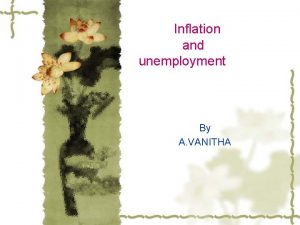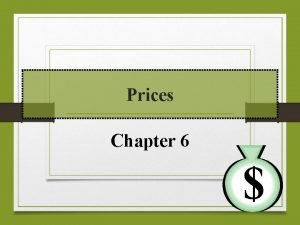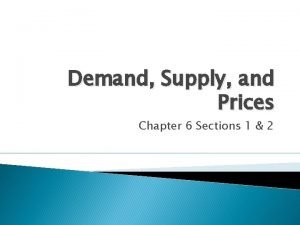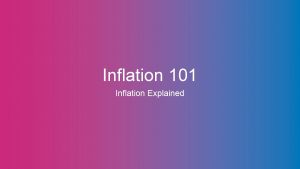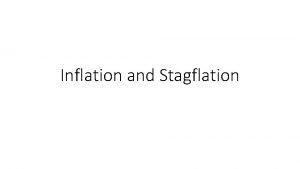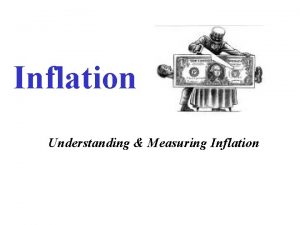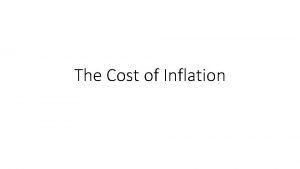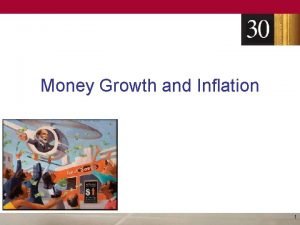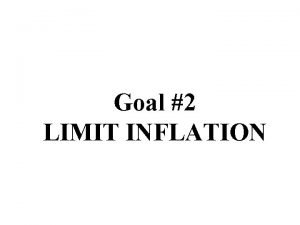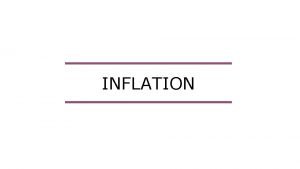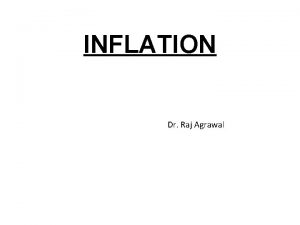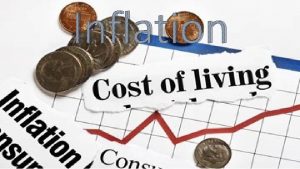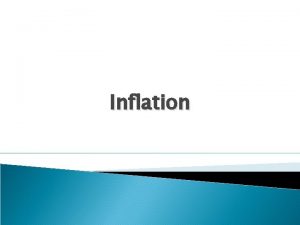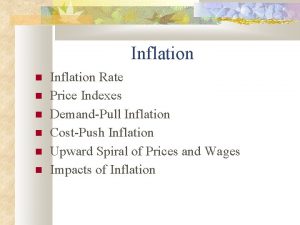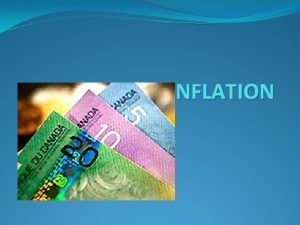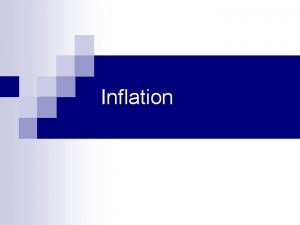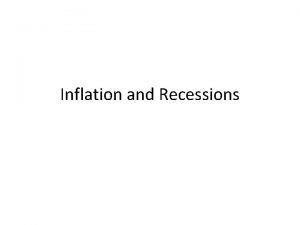Chapter 13 Accounting for Inflation Changing Prices Inflation


















- Slides: 18

Chapter 13: Accounting for Inflation & Changing Prices Inflation Price indexes Inflation accounting Income measurement systems SFAS No. 33

Inflation The rise in the average price level for all goods and services produced in an economy Under a historical cost-based system of accounting inflation leads to two basic problems v Many historical numbers are not economically relevant v Historical numbers are not additive

Inflation and Historical Costing Likely predictive value is diminished Comparability among financial statements of different firms is restricted Capital maintenance v Income usually overstated relative to amounts that can be distributed to stockholders v Many dividends are really liquidating in nature

Price Indexes Is a weighted average of the current prices of goods and services v Averages are related to prices in a base period v Purpose is to determine how much change has occurred Types of price indexes v Specific price index v General price index

Price Indexes Paasche-type indexes Uses current-year quantities v Wholesale Price Index v Consumer price Index v Laspeyres-type indexes Uses base-year quantities v Less costly to construct v

Inflation Accounting General purchasing power adjustment translates historical dollars into dollars having equivalent purchasing power Current valuation, also called current cost, attempts to derive the specific value or worth for a particular point. . . v Entry values v Exit values

Entry vs. Exit Values Entry values v Value in use is best represented by replacement costs v Strong argument in support of use Exit values v Are a form of opportunity costs v The balance sheet becomes the principal financial statement

Purchasing Power Gains & Losses Arise as a result of holding net monetary assets or liabilities during a period when the price level changes Monetary assets and liabilities include cash itself and other assets and liabilities that are receivable or payable in a fixed number of dollars

Purchasing Power Gains & Losses State of the Enterprise Inflation Deflation Net Monetary Asset Position Purchasing Power Loss Purchasing Power Gain Net Monetary Liability Position Purchasing Power Gain Purchasing Power Loss

Holding Gains & Losses Holding gains and losses on real (nonmonetary) assets can be divided into two parts monetary holding gains and losses, which arise purely because of the change in the general price level during the period; and v real holding gains and losses, which are the difference between general price-level-adjusted amounts and current values. v Are capital adjustments only; they are not a component of income

The Gearing Adjustment Somewhat related to the holding gain Was used in Great Britain as part of that country’s inflation accounting mechanism Results in gains to equity capital during inflation because debt capital does not have any claim on holding gains proved to be an extremely confusing concept

Income Measurement Systems Current Value Approaches v Distributable Income (DI) v Realized Income (RI) v Earning Power Income (EPI) Methods differ in terms of disposition of real holding gains and the resulting type of capital maintenance measure

SFAS No. 33 FASB decided to keep nominal historical costs as the basis of primary financial statements Specified that the effects of changing prices should be presented as supplementary information in annual reports FASB realized that a consensus could not be obtained on which method of accounting should be adopted

SFAS No. 33 Not all enterprises had to comply with SFAS No. 33 For constant dollar reporting, the SFAS required disclosure of v Information on income from continuing operations for the current fiscal year on a historical cost/constant dollar basis. . . v The purchasing power gain or loss on net monetary items for the current fiscal year. .

SFAS No. 33’s Failure There was a dramatic decline of inflation during the early 1980 s Measurement problems were present Questions of understandability and usefulness for predictive purposes

SFAS No. 82 issued in 1984 Eliminated the constant dollar income disclosures that had previously been required by SFAS No. 33 v information confused users v may have caused “information overload” because of the presence of similar current cost income disclosures

SFAS No. 89 Two parts of SFAS No. 33 remained in effect; were “encouraged” but not required v current cost income measurement, purchasing power gain or loss, and v holding gain information FASB beat a hasty retreat from the problem of accounting for changing prices

Chapter 13: Accounting for Inflation & Changing Prices Inflation Price indexes Inflation accounting Income measurement systems SFAS No. 33
 Types of unemployment
Types of unemployment Role of managerial accounting
Role of managerial accounting Intermediate accounting chapter 1
Intermediate accounting chapter 1 Chapter 6 prices and decision making assessment answers
Chapter 6 prices and decision making assessment answers Chapter 6 lesson 1 how prices work
Chapter 6 lesson 1 how prices work Chapter 6 section 3 the role of prices answers
Chapter 6 section 3 the role of prices answers Chapter 6 demand supply and prices
Chapter 6 demand supply and prices Kontinuitetshantering i praktiken
Kontinuitetshantering i praktiken Typiska novell drag
Typiska novell drag Nationell inriktning för artificiell intelligens
Nationell inriktning för artificiell intelligens Vad står k.r.å.k.a.n för
Vad står k.r.å.k.a.n för Varför kallas perioden 1918-1939 för mellankrigstiden
Varför kallas perioden 1918-1939 för mellankrigstiden En lathund för arbete med kontinuitetshantering
En lathund för arbete med kontinuitetshantering Underlag för särskild löneskatt på pensionskostnader
Underlag för särskild löneskatt på pensionskostnader Tidbok för yrkesförare
Tidbok för yrkesförare Sura för anatom
Sura för anatom Densitet vatten
Densitet vatten Datorkunskap för nybörjare
Datorkunskap för nybörjare Tack för att ni lyssnade bild
Tack för att ni lyssnade bild
